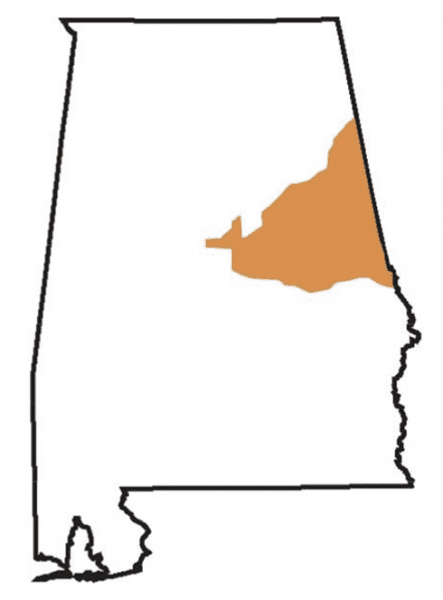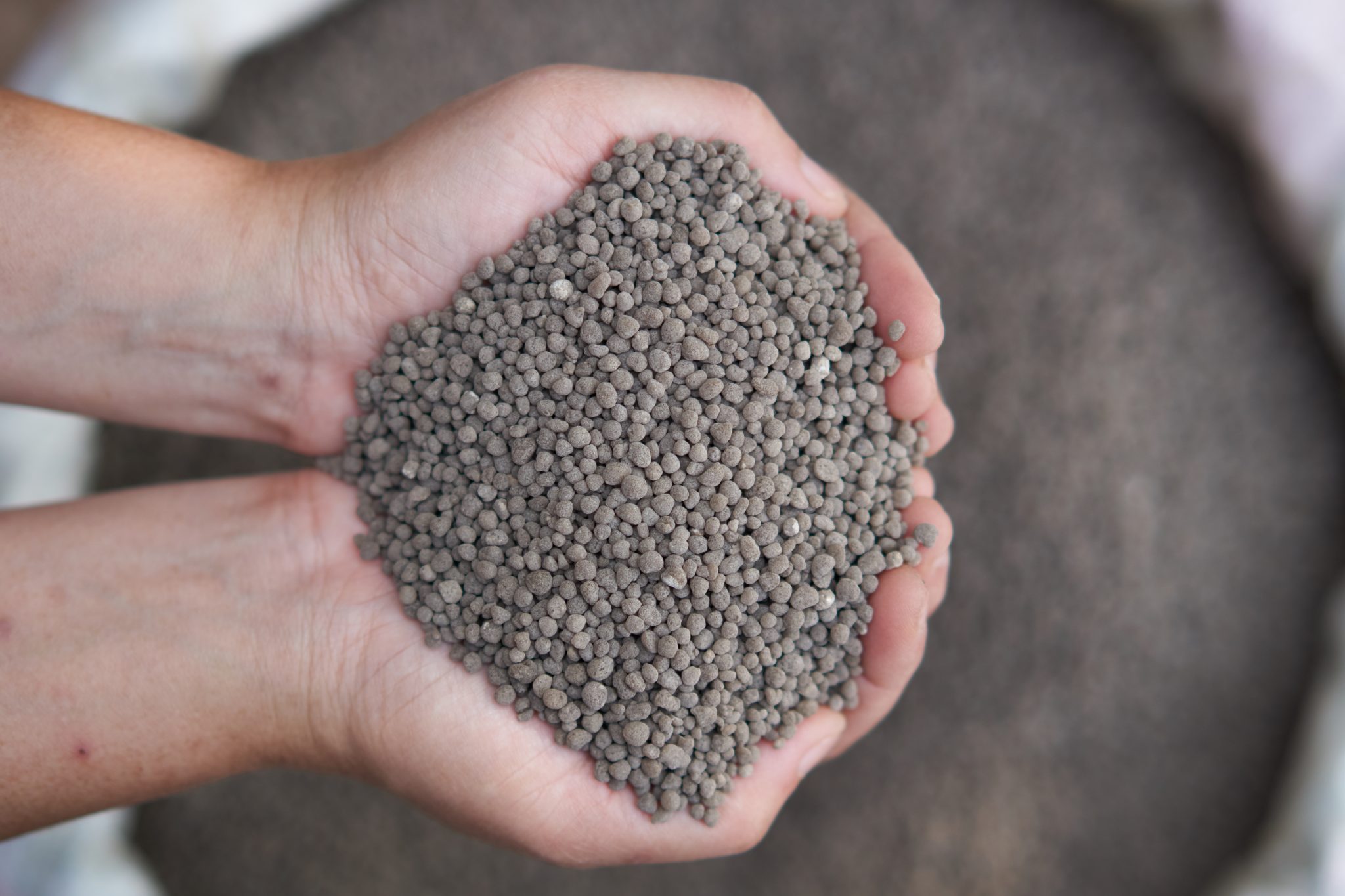Crop Production


Figure 1. Piedmont soils of Alabama.
Part of the Phosphorus Management series, this text provides soil and water professionals with calculations needed to determine soil phosphorus storage capacity of Alabama Piedmont soils. This information can be used to more accurately assess environmental phosphorus loss risk.
Soil test phosphorus (STP) is the most widely used tool for determining phosphorus fertilizer recommendations. It also is used for predicting environmental risk of phosphorus loss from agricultural lands. However, STP does not account for the phosphorus retentive capacity of soils and thus provides a less reliable estimate for accurately predicting phosphorus loss risk.
The phosphorus saturation ratio (PSR) and soil phosphorus storage capacity (SPSC) are simple tools that can be used effectively in environmental phosphorus risk assessment. This article provides systematic instructions for calculating the soil phosphorus storage capacity of Piedmont soils typically found in Randolph, Clay, Coosa, Tallapoosa, and Chambers counties of Alabama (figure 1).
Steps to Determine Soil Phosphorus Storage Capacity
Determination of soil phosphorus storage capacity requires estimation of the threshold phosphorus saturation ratio. This ratio is a unique value for a given soil group and is identified primarily through study of the relationship between water-soluble phosphorus and soil extractable phosphorus (P), iron (Fe), and aluminum (Al).
Table 1 provides the unique threshold phosphorus saturation ratio values for the Piedmont soils of Alabama. The threshold phosphorus saturation ratio value differs when different soil test extractants (e.g., Mehlich-1 or Mehlich-3) are used by the soil testing laboratory. Soil phosphorus storage capacity is typically calculated using acid ammonium oxalate extractant. However, many laboratories do not offer this extractant on a routine basis. As an alternative, Mehlich-1 or Mehlich-3 extractants can be used to calculate storage capacity by applying a soil-specific conversion factor.
Table 1. Threshold Phosphorus Saturation Ratio (PSR) and Confidence Limit of Piedmont Soils
2 95 percent confidence limit of the threshold PSR based on Chakraborty et al.
Step 1. Collect a composite soil sample from the 0 to 6 inch depth. A composite sample is prepared by collecting soil cores 0 to 6 inches deep from three to five random locations and mixing them to form one combined sample.
Step 2. Send the soil samples to a soil testing laboratory and request extractable phosphorus, aluminum, and iron using Mehlich-1 or Mehlich-3.
Step 3. Ask the laboratory to report extractable phosphorus, iron, and aluminum in mg kg-1. If the laboratory reports values in lb acre-1, divide the values by 2 to convert them into mg kg-1.
Step 4. Calculate the phosphorus saturation ratio using the following equation (in mg kg-1 values only):
Equation 1
PSR = [Extractable P (mg kg-1)/31] ÷ [Extractable Fe (mg kg-1)/56 + Extractable Al (mg kg-1)/27]
(Extractable P, Fe, and Al are extractable phosphorus, iron, and aluminum concentrations obtained from the soil testing laboratory following steps 2 and 3.)
Step 5. Look up the appropriate threshold phosphorus saturation ratio in table 1 for the extractant (Mehlich-1 or Mehlich-3) used to calculate the phosphorus saturation ratio in step 4.
Step 6. Calculate the soil phosphorus storage capacity (expressed in mg kg-1) using the following equations, as applicable:
Equation 2
SPSCMehlich-1 (mg kg-1) = [Threshold PSRMehlich-1 – Soil PSRMehlich-1 ] × [Mehlich-1 Fe/56 (mg kg-1) + Mehlich-1 Al/27 (mg kg-1)] × 31 × 2.8
Equation 3
SPSCMehlich-3 (mg kg-1) = [Threshold PSRMehlich-3 – Soil PSRMehlich-3 ] × [Mehlich-3 Fe/56 (mg kg-1) + Mehlich-3 Al/27 (mg kg-1)] × 31 × 1.5
Threshold PSRMehlich-1 and threshold PSRMehlich-3 can be obtained from table 1; soil PSRMehlich-1 and soil PSRMehlich-3 can be obtained from the equation in step 4; Mehlich-1 Fe, Mehlich-3 Fe, Mehlich-1 Al, and Mehlich-3 Al can be obtained from the soil testing laboratory following steps 2 and 3.
Step 7. Express the soil phosphorus storage capacity in lb/acre using the following equation:
Equation 4
SPSC (lb acre-1) = [SPSC calculated in step 6 (mg kg-1)] × [{Thickness of soil horizon (m) × Bulk density (kg m-3)}/100] × 0.89
The bulk density value may differ between land use practices. A ballpark estimate of bulk density can be obtained from the NRCS Web Soil Survey website.
Example Calculation
This is an example calculation of soil phosphorus storage capacity of surface soils collected from Piedmont regions using Mehlich-3 extractant. Let’s assume the soil test reports Mehlich-3 phosphorus, iron, and aluminum concentrations as 50 mg kg-1, 1,000 mg kg-1, and 800 mg kg-1, respectively. Applying the equation in step 4, the PSR of the soil will be determined as follows:
1. PSRMehlich-3 = [50/31] ÷ [(1,000/56) + (800/27)] = 0.033
2. Look up the threshold value of Mehlich-3 in table 1, which in this case is 0.05.
3. Next, calculate the soil phosphorus storage capacity using Mehlich-3 extract in step 6, equation 3.
SPSCMehlich-3 (mg kg-1) = [0.05 – 0.033] × [(1,000/56) + (800/27)] × 31 × 1.5
SPSCMehlich-3 (mg kg-1) = 35.41
4. Soil phosphorus storage capacity obtained in mg kg-1 can now be expressed in lb/acre-1 as shown in the step 7, equation 4:
SPSCMehlich-3 (lb acre-1) = [35.41] × [(0.15 × 1,460) ÷ 100] × 0.89
SPSCMehlich-3 (lb acre-1) = 69.01
Here, bulk density is 1,460 kg m-3 and thickness of the soil horizon is 0.15 m (6 in = 0.15 m)
Interpreting Soil Phosphorus Storage Capacity Values for Environmental Phosphorus Loss Risk
Soil phosphorus storage capacity can be used as the phosphorus capacity index of soil and used to predict whether the soil is a potential phosphorus source or a phosphorus sink.
Positive soil phosphorus storage capacity value indicates that the soil has the capacity to retain additional phosphorus (P sink). Greater positive value indicates greater capacity of the soil to fix external phosphorus.
Negative soil phosphorus storage capacity value indicates that the soil is acting as a potential phosphorus source. Greater negative value indicates that the soil has a greater capacity to release P during runoff events. Implementation of best management practices should be encouraged to prevent potential phosphorus loss during runoff events from soils having greater negative SPSC values.
Reference
- Chakraborty, D., R. Prasad, A. Bhatta, and A. Torbert. 2021.” Understanding the environmental impact of phosphorus in acidic soils receiving repeated poultry litter applications.” Science of the Total Environment 779, 146267. https://doi.org/10.1016/j.scitotenv.2021.146267
Debolina Chakraborty, Research Fellow, and Rishi Prasad, Extension Specialist, Assistant Professor, both in Crop, Soil and Environmental Sciences, Auburn University
New August 2021, Phosphorus Management: Soil Phosphorus Storage Capacity for Alabama Piedmont Soils, ANR-2815

